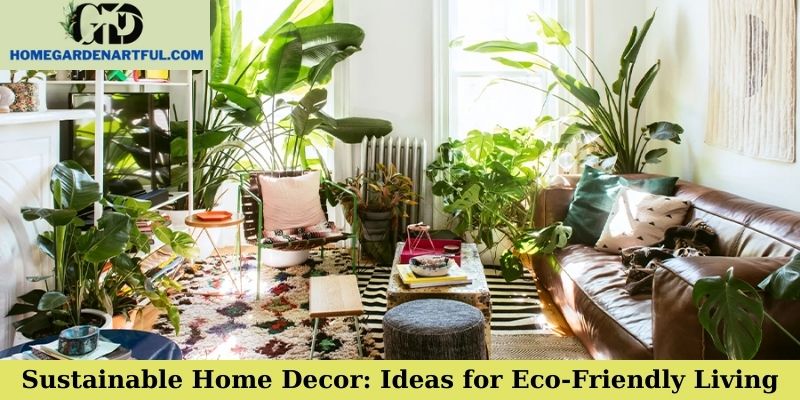Welcome to the world of sustainable home decor! As our society becomes more environmentally conscious, many people are embracing eco-friendly living in all aspects of their lives, including the way they decorate their homes. Sustainable home decor not only helps reduce our carbon footprint but also creates a healthier living environment for ourselves and future generations. In this article, we will explore various ideas and trends for incorporating sustainability into your home decor, so you can create a beautiful and eco-friendly living space.
Sustainable home decor is all about making conscious choices that support the health of the planet. It involves using materials that are renewable, recycled, or have minimal impact on the environment. From the furniture you choose to the textiles you use, every decision matters when it comes to creating a sustainable home.
Ready to make your home a haven of environmentally-friendly design? Let’s dive into the world of sustainable home decor and explore some exciting ideas that you can incorporate into your space!
“Sustainable home decor not only helps reduce our carbon footprint but also creates a healthier living environment for ourselves and future generations.”
Use of Sustainable and Recycled Materials
When it comes to sustainable home decor, one of the key aspects to consider is the use of sustainable and recycled materials. By incorporating these materials into your home, you can not only reduce your carbon footprint but also create a unique and eco-friendly living space. Let’s explore some ideas on how to use sustainable and recycled materials in your home decor:
- Reclaimed Wood: Reclaimed wood is a fantastic choice for adding warmth and character to your home. It is obtained from old barns, factories, or even demolished buildings and can be repurposed into furniture, flooring, or wall paneling. By using reclaimed wood, you give new life to these materials and prevent them from ending up in landfills.
- Recycled Glass: Glass is a versatile material that can be recycled and used in various ways. Incorporating recycled glass into your home decor can add a touch of elegance and sustainability. Consider using recycled glass tiles for kitchen backsplashes or countertops, or opt for decorative glass pieces made from recycled bottles for unique accents.
- Upcycled Furniture: Instead of buying new furniture, why not give a second life to old pieces? Upcycling furniture is a great way to add creativity and sustainability to your home. You can refurbish old dressers, tables, or chairs by applying a fresh coat of paint, reupholstering with eco-friendly fabrics, or adding unique embellishments. Not only will you save money, but you’ll also reduce waste.
- Cork: Cork is an eco-friendly material that is not only sustainable but also versatile. It is harvested from the bark of cork oak trees, making it a renewable resource. Cork can be used in various ways, such as flooring, wall coverings, or even as a material for furniture and accessories. Its natural texture and ability to absorb sound make it an excellent choice for sustainable home decor.
- Recycled Metal: Metal can be melted down and repurposed into new items, making it a great material for sustainable home decor. Look for furniture or decor pieces made from recycled metal, such as lamps, sculptures, or even shelving units. Not only will you be reducing waste, but you’ll also be adding an industrial and modern touch to your space.
By using sustainable and recycled materials in your home decor, you not only contribute to a greener planet but also create a unique and personalized living space that reflects your values. So, get creative and start exploring these sustainable options for a more eco-friendly home!
Incorporating Greenery
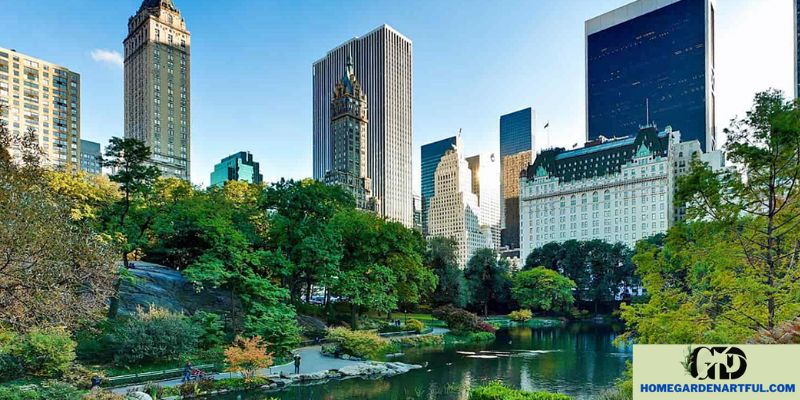
Incorporating greenery, such as indoor plants, is a popular trend in eco-friendly design. Not only do plants add a touch of natural beauty to your home, but they also offer a range of environmental benefits. Here are a few ideas and tips for incorporating greenery in your sustainable home decor:
Indoor Plants
Indoor plants are a great way to bring nature indoors and create a calming and peaceful atmosphere. They also offer a range of health benefits, including improved air quality and reduced stress levels. Here are some popular indoor plants to consider:
- Snake Plant: This low-maintenance plant is known for its ability to filter toxins from the air, making it a great choice for improving indoor air quality.
- Spider Plant: Spider plants are easy to care for and are known for their ability to remove formaldehyde from the air.
- Pothos: Pothos plants are great for beginners, as they are low-maintenance and can thrive in a variety of lighting conditions.
- Fiddle-Leaf Fig: This trendy plant adds a touch of elegance to any room and can be a statement piece in your sustainable decor.
When selecting plants for your home, consider those that are native to your region, as they are adapted to the local climate and require less water and maintenance. Additionally, choose plants that are suited to the lighting conditions in each room of your home.
Incorporating indoor plants in your sustainable home decor can provide a range of benefits, from improving air quality to reducing stress levels.
Remember to care for your plants properly by providing them with the right amount of water, light, and nutrients. Avoid over-watering and choose natural and organic fertilizers to minimize the use of chemicals in your home.
Additional Tips:
- Vertical Gardens: If you have limited floor space, consider creating a vertical garden. This involves attaching planters to a wall or using hanging planters to create a living wall of greenery.
- Herb Gardens: Incorporating an herb garden in your kitchen is a great way to have fresh herbs at your fingertips while adding a vibrant touch to your space.
- Terrariums: Terrariums are small, enclosed glass containers that create a self-sustaining ecosystem. They require very little maintenance and add a unique and whimsical element to your decor.
- Air-Purifying Plants: Choose plants that have air-purifying properties, such as Aloe Vera, Boston Fern, and Peace Lily. These plants help remove toxins from the air and create a healthier living environment.
Remember, the key to incorporating greenery into your sustainable home decor is to select plants that are easy to care for and suited to your specific living conditions. By adding indoor plants, you can create a beautiful and eco-friendly space that promotes a sense of well-being and connection to nature.
Natural Materials in Home Decor
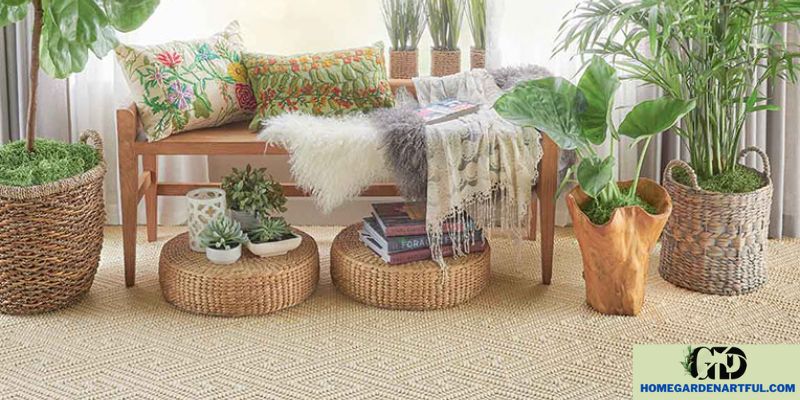
When it comes to sustainable home decor, natural materials are becoming increasingly popular. Not only do they add a touch of organic beauty to your living space, but they also contribute to a healthier environment. In this section, we will explore some of the natural materials that are commonly used in home decor and how you can incorporate them into your own eco-friendly design.
Bamboo
Bamboo is a highly sustainable material that is known for its strength and versatility. It grows quickly, making it an excellent choice for eco-conscious consumers. Here are some ways you can incorporate bamboo into your home decor:
- Bamboo furniture: From chairs and tables to shelving units and bed frames, bamboo furniture adds a touch of natural elegance to any room.
- Bamboo flooring: Replace your traditional hardwood floors with bamboo flooring, which is not only eco-friendly but also durable and easy to maintain.
- Bamboo kitchenware: Say goodbye to plastic and opt for bamboo kitchen utensils, cutting boards, and even plates and bowls.
Wood
Wood is a classic material that never goes out of style. However, it’s important to choose sustainably sourced wood to ensure that you’re not contributing to deforestation. Here are some ways to incorporate wood into your sustainable home decor:
- Reclaimed wood furniture: Give new life to old wood by using reclaimed wood for your furniture. It adds character and a rustic charm to any space.
- Solid wood countertops: Consider using solid wood countertops in your kitchen or bathroom. They are durable, stylish, and eco-friendly.
- Wooden accessories: From picture frames and shelves to decorative accents, wooden accessories bring warmth and nature into your home.
Stone
Stone is a natural material that exudes elegance and timelessness. It’s also a highly sustainable option for home decor. Here are some ways you can incorporate stone into your design:
- Stone countertops: Opt for natural stone like granite or marble for your kitchen or bathroom countertops. They are durable, easy to clean, and add a touch of luxury to your space.
- Stone accent walls: Create a focal point in your living room or bedroom by adding a stone accent wall. It adds texture and a sense of tranquility.
- Stone decor: Use stone sculptures, vases, or candle holders to bring a touch of nature indoors and enhance the natural aesthetics of your home.
Clay
Clay is a versatile material that has been used in home decor for centuries. It’s durable, eco-friendly, and adds a touch of earthiness to any space. Here are some ways you can incorporate clay into your sustainable home decor:
- Clay pottery: Use clay pots or vases for your plants or as decorative pieces in any room. They add a rustic charm and a sense of craftsmanship.
- Clay tiles: Consider using clay tiles for your flooring or backsplash. They are sustainable, easy to clean, and come in a variety of colors and patterns.
- Clay wall art: Add clay wall art, such as handmade ceramic tiles or clay masks, to create a unique and artistic focal point in your home.
By incorporating natural materials like bamboo, wood, stone, and clay into your home decor, you not only create a beautiful living space but also contribute to a more sustainable and eco-friendly environment. So go ahead, embrace the beauty of nature in your home!
Eco-Friendly Fabrics and Textiles
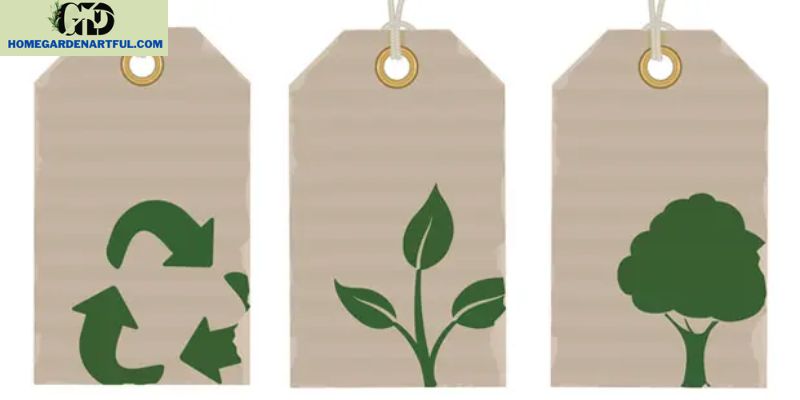
When it comes to sustainable home decor, one of the key elements to consider is the use of eco-friendly fabrics and textiles. Choosing materials that are produced sustainably and have a low environmental impact can make a significant difference in creating an eco-friendly living space. In this section, we will explore some popular options for eco-friendly fabrics and textiles in home decor.
Vintage Textiles
Vintage textiles have gained popularity in recent years as a sustainable alternative to new fabrics. By repurposing and upcycling old fabrics, you can add a unique and eco-friendly touch to your home decor. Vintage fabrics can be used in a variety of ways, such as curtains, pillow covers, upholstery, and even as wall hangings. These textiles not only add character to your space but also reduce the demand for new fabric production, which has a significant environmental impact.
Sustainable Fabrics
In addition to vintage textiles, there is a wide range of sustainable fabrics available in the market. These fabrics are made from materials that have been produced using environmentally friendly processes and practices. Some popular sustainable fabric options include:
- Organic Cotton: Organic cotton is grown without the use of harmful pesticides or synthetic fertilizers, making it a more environmentally friendly choice compared to conventional cotton.
- Bamboo Fabric: Bamboo is a fast-growing and renewable resource, making it an excellent choice for sustainable fabrics. Bamboo fabric is soft, breathable, and has natural antibacterial properties.
- Hemp Textiles: Hemp is another sustainable fabric option that requires fewer resources to grow compared to cotton. It is known for its durability and moisture-wicking properties.
- Recycled Polyester: Recycled polyester is made from post-consumer plastic bottles and other recycled materials. It helps reduce waste and energy consumption associated with traditional polyester production.
By choosing sustainable fabrics for your home decor, you can reduce your carbon footprint and contribute to a more environmentally friendly lifestyle. These fabrics not only look great but also promote a healthy and sustainable living environment.
“Using vintage textiles and sustainable fabrics in home decor is not only stylish but also a way to contribute to a more sustainable future.”
Green Home Design Trends
In recent years, there has been growing interest in sustainable living and eco-friendly practices. One area where this trend is particularly evident is in home design. Many homeowners are now opting for green home design trends that not only look stylish but also minimize their environmental impact. If you’re considering renovating or building a new home, here are some popular green home design trends to consider:
Prefab Homes
Prefab homes, short for prefabricated homes, are a popular choice for eco-conscious homeowners. These homes are built off-site in a factory and then transported to the desired location for assembly. Prefab homes have many advantages, including reduced construction waste, faster construction time, and energy efficiency. Instead of traditional construction methods that produce significant waste, prefab homes are built using precise measurements, resulting in minimal materials waste.
Cargotecture
Cargotecture, also known as shipping container architecture, is a sustainable design trend that repurposes shipping containers into homes and buildings. This trend gained popularity due to the abundance of unused shipping containers. By converting these containers into living spaces, homeowners can reduce resource consumption and waste while creating unique and contemporary designs. Cargotecture is not only environmentally friendly but also cost-effective, as shipping containers are readily available and affordable.
Tiny Homes
Another green home design trend is the rise of tiny homes. These small, compact houses are designed to maximize space utilization and minimize energy consumption. Tiny homes have a smaller footprint compared to traditional houses, which means less energy is required to heat, cool, and light the space. Additionally, tiny homes often incorporate sustainable features such as solar panels, rainwater collection systems, and composting toilets, further reducing their environmental impact.
Smart Homes
Smart homes are a growing trend in sustainable design. These homes incorporate various technologies to optimize energy efficiency and create a comfortable living environment. Smart home automation can control heating and cooling systems, lighting, and appliances, allowing homeowners to monitor and adjust energy usage. By automating and optimizing energy consumption, smart homes can significantly reduce energy waste and lower utility bills. Green home design trends are not limited to the construction of the house itself. Other aspects related to sustainability and environmental conservation are also crucial considerations when designing a green home:
Water Conservation and Indoor Air Quality

When it comes to sustainable home decor, it’s not only about using eco-friendly materials and incorporating greenery; water conservation and indoor air quality are equally important considerations. By focusing on these aspects, you can create a healthier and more sustainable living environment. Here are some tips on how to incorporate water conservation and improve indoor air quality in your home:
Water Conservation:
- Low-Flow Fixtures: Install low-flow faucets, showerheads, and toilets to reduce water usage without compromising functionality. These fixtures can significantly reduce water consumption and help you save on your water bills.
- Rainwater Harvesting: Consider installing a rainwater harvesting system to collect rainwater and use it for non-potable purposes, such as watering plants or flushing toilets. It’s a great way to make use of natural resources and reduce your reliance on municipal water supply.
- Greywater Recycling: Implement a greywater recycling system, which captures water from sources like sinks, showers, and laundry, and repurposes it for irrigation or toilet flushing. This helps conserve water and reduces the strain on freshwater sources.
- Drip Irrigation: Use drip irrigation systems in your garden instead of traditional sprinklers. Drip irrigation delivers water directly to the plant’s roots, minimizing water wastage through evaporation and runoff.
Indoor Air Quality:
- Proper Ventilation: Ensure adequate ventilation in your home to improve indoor air quality. Open windows regularly to let in fresh air and consider using exhaust fans in areas prone to moisture, such as bathrooms and kitchens, to prevent the build-up of mold and mildew.
- Air Purifying Plants: Besides adding a touch of greenery, certain indoor plants can also help purify the air by removing pollutants. Spider plants, peace lilies, and snake plants are excellent choices for improving indoor air quality.
- Eco-Friendly Cleaning Products: Switch to eco-friendly cleaning products that are free from harsh chemicals and volatile organic compounds (VOCs). This not only reduces the release of harmful substances into the air but also protects the health of your family and pets.
- Avoid Synthetic Fragrances: Many synthetic fragrances found in air fresheners and scented candles release harmful chemicals into the air. Opt for natural alternatives like essential oils or soy-based candles to keep your indoor air fresh and free from toxins.
By implementing these water conservation and indoor air quality measures, you can create a more sustainable and healthy home environment. Not only will you be reducing your water consumption and conserving resources, but you’ll also be improving the air you and your family breathe. So, why not make these upgrades to your home decor and contribute to a greener future? Remember, every small step counts towards a more sustainable lifestyle.
Sustainable Design Styles
Sustainable design styles offer a beautiful and eco-friendly way to decorate your home. These styles not only promote a greener way of living, but they also create a unique and inviting atmosphere. If you’re looking to incorporate sustainable design into your home, here are two popular styles to consider:
1. Grandmillennial Style
The grandmillennial style is all about blending vintage and traditional elements with a modern twist. It embraces old-world charm and creates a cozy atmosphere that is both nostalgic and sustainable. Here’s how you can incorporate this style into your home:
- Mix patterns and textures: Use vintage-inspired fabrics and wallpapers with floral or geometric patterns to create a sense of opulence and liveliness.
- Embrace antiques: Incorporate antique furniture pieces or vintage accessories for a touch of history and character in your space.
- Opt for natural materials: Choose furniture crafted from sustainable materials like bamboo or reclaimed wood for a truly eco-friendly touch.
- Emphasize craftsmanship: Look for locally-made, handcrafted items that showcase artisanal skills and support local communities.
2. Biophilic Design
Biophilic design brings nature indoors and emphasizes the connection between humans and the natural world. This design style not only enhances the aesthetic appeal of your space, but it also promotes well-being and sustainability. Here are some ways to incorporate biophilic design into your home:
- Maximize natural light: Open up your space to allow ample natural light to enter, creating a bright and airy atmosphere.
- Introduce plants and greenery: Bring the outdoors inside by adding indoor plants to your space. They not only purify the air but also add a touch of freshness and tranquility to your home.
- Use natural elements: Incorporate natural materials like wood, stone, or clay in your furniture and decor to create a connection to the earth.
- Create a green wall: Install a vertical garden or a living wall to create a stunning focal point in your space while also improving air quality.
By incorporating these sustainable design styles into your home, you can create a space that is not only visually appealing but also environmentally friendly. These styles allow you to express your personal style while also reducing your carbon footprint and living a more sustainable lifestyle. So go ahead and embrace sustainable design in your home for a greener, more beautiful future.
Upcycling and Repurposing Old Items
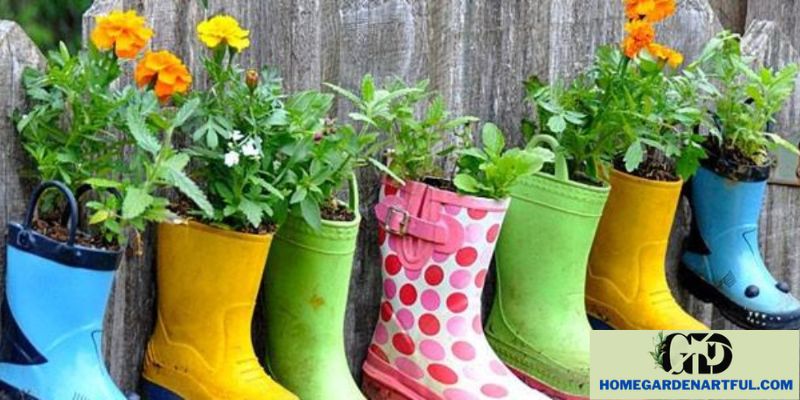
When it comes to sustainable home decor, upcycling and repurposing old items is a fantastic way to add a unique touch to your living space while reducing waste. It’s a win-win situation that allows you to create something new and beautiful out of items that would have otherwise ended up in a landfill. So, instead of throwing away those old furniture pieces or accessories, why not give them a new lease on life? Here are some ideas and tips for upcycling and repurposing old items in your home decor:
1. Furniture Makeover
One of the easiest ways to upcycle old furniture is by giving it a fresh coat of paint or stain. For example, that worn-out wooden chair can be transformed into a stylish and modern statement piece with a simple layer of paint. Experiment with different colors and finishes to create a unique look that complements your home decor.
Additionally, consider reupholstering old chairs and sofas with new fabric. This not only gives them a fresh look but also allows you to choose sustainable fabrics such as organic cotton or linen.
2. Creative Storage Solutions
Old crates, suitcases, and even ladders can be repurposed into stylish and functional storage solutions. For example, stack vintage suitcases on top of each other to create a charming side table with hidden storage compartments. Hang an old ladder horizontally on a wall and use it as a rustic bookshelf or to display plants or decorative items.
3. Lighting Fixtures
Give your lighting fixtures a new life by upcycling and repurposing them. For example, mason jars can be turned into pendant lights by attaching a light socket and cord. Wine bottles can be transformed into unique hanging pendant lights by fitting them with a lamp kit and suspending them from the ceiling.
4. Picture Frames and Mirrors
Don’t let old picture frames and mirrors gather dust in a corner. Give them a makeover by painting them in fresh colors or distressing them for a vintage look. You can also use frames and mirrors to create a gallery wall by arranging them in an interesting pattern on a wall.
5. Bottles and Jars
Instead of throwing away glass bottles and jars, repurpose them into stylish home decor accents. Clean them thoroughly and remove any labels, then use them as vases for flowers, candle holders, or even as storage containers for small items like spices or jewelry. You can also paint them in different colors to add a pop of color to your space.
Remember, upcycling and repurposing old items gives you the opportunity to get creative and add your personal touch to your home decor. Don’t be afraid to think outside the box and experiment with different ideas. The possibilities are endless, and the end result will not only be environmentally friendly but also a reflection of your unique style.
So, before you toss out those old items, take a moment to consider how you can repurpose them and give them new life. By upcycling, you contribute to a more sustainable future while adding character and charm to your home. Get creative, have fun, and enjoy the transformation of old items into something beautiful and meaningful!
Conclusion
In conclusion, sustainable home decor is not only beneficial for the environment, but it also allows you to create a stylish and unique living space. By using sustainable and recycled materials, incorporating greenery, utilizing natural materials, choosing eco-friendly fabrics and textiles, embracing green home design trends, prioritizing water conservation and indoor air quality, exploring sustainable design styles, and upcycling and repurposing old items, you can make a positive impact on the planet while expressing your personal style.
By making conscious choices and opting for sustainable options, you can transform your home into a haven that reflects your values and love for the Earth. Remember, small changes can make a big difference when it comes to sustainable home decor. So, let your creativity shine and create a space that is not only beautiful but also eco-friendly.
At homegardenartful.com, we are passionate about sustainable living and offer a wealth of resources and how-to guides to help you on your journey. Visit our website for more inspiration and ideas on how to incorporate sustainability into your home decor.
Check out homegardenartful.com for more sustainable home decor inspiration and resources!
Remember, the choices you make in your home can have a positive impact on the planet. Let’s join hands and create a more sustainable future, one stylish home at a time!
Frequently Asked Questions
- What are some eco-friendly home decor ideas?Some eco-friendly home decor ideas include using sustainable materials like bamboo, reclaimed wood, and organic fabrics, opting for energy-efficient lighting, incorporating indoor plants for air purification, and repurposing or upcycling items instead of buying new.
- How can I make my home more sustainable?To make your home more sustainable, you can reduce energy consumption by using energy-efficient appliances, insulating properly, and installing solar panels. Additionally, incorporating recycling and composting systems, using eco-friendly cleaning products, and reducing water usage can also contribute to sustainability.
- Are there any eco-friendly alternatives to plastic home decor items?Yes, there are several eco-friendly alternatives to plastic home decor items. You can choose products made from natural materials like glass, metal, clay, or sustainably sourced wood. Additionally, you can also opt for biodegradable or compostable materials for certain items.
- Can sustainable home decor be affordable?Yes, sustainable home decor can be affordable. There are many budget-friendly options available, such as thrift store finds, DIY projects using recycled materials, and shopping from eco-friendly brands that offer reasonably priced products.
- What are some sustainable lighting options for home decor?Some sustainable lighting options for home decor include LED lights, which are energy-efficient and have a longer lifespan. Natural daylight can also be utilized by incorporating skylights or strategically placing mirrors to reflect light. Additionally, using solar-powered outdoor lighting is a great sustainable choice.

